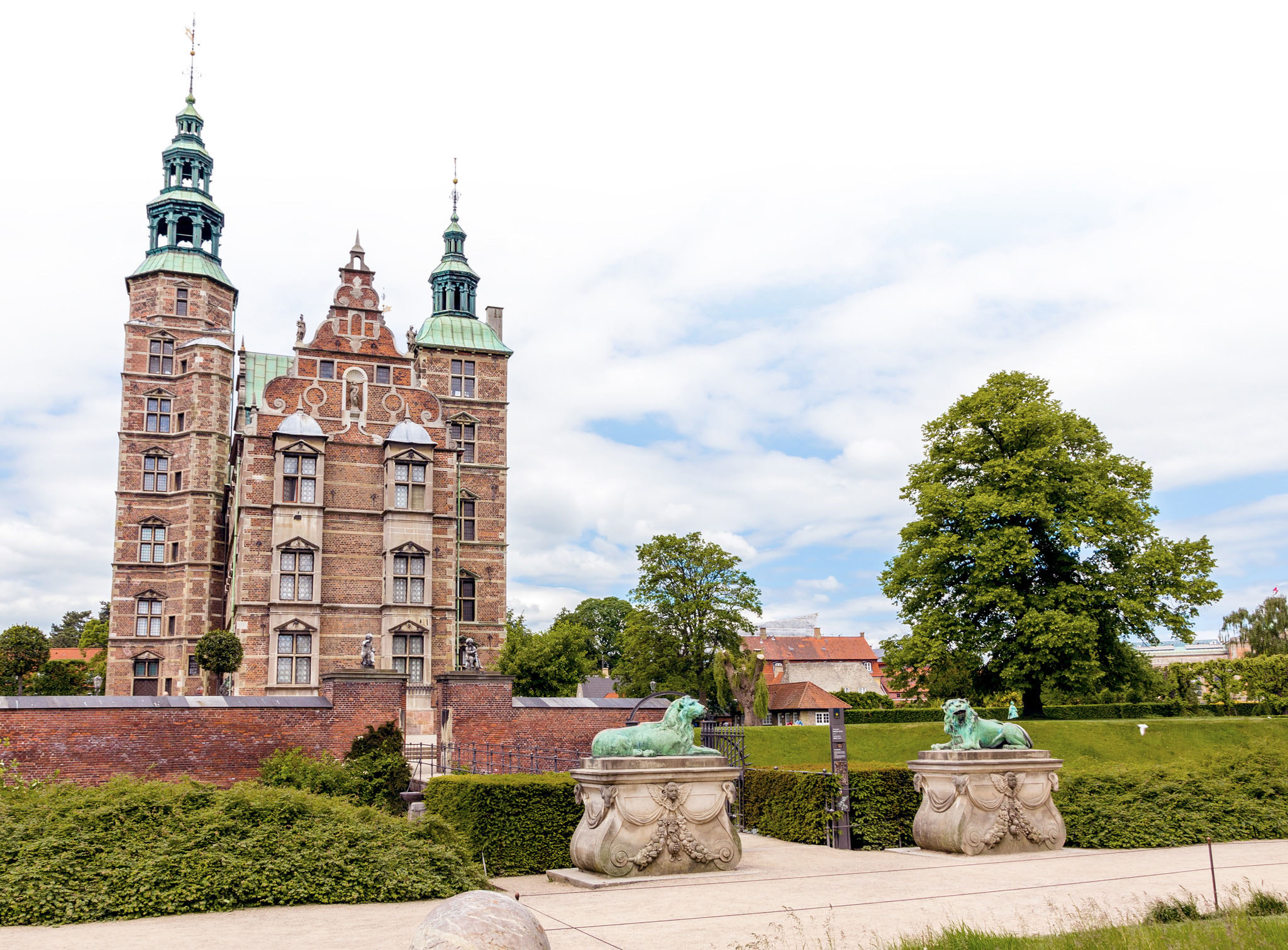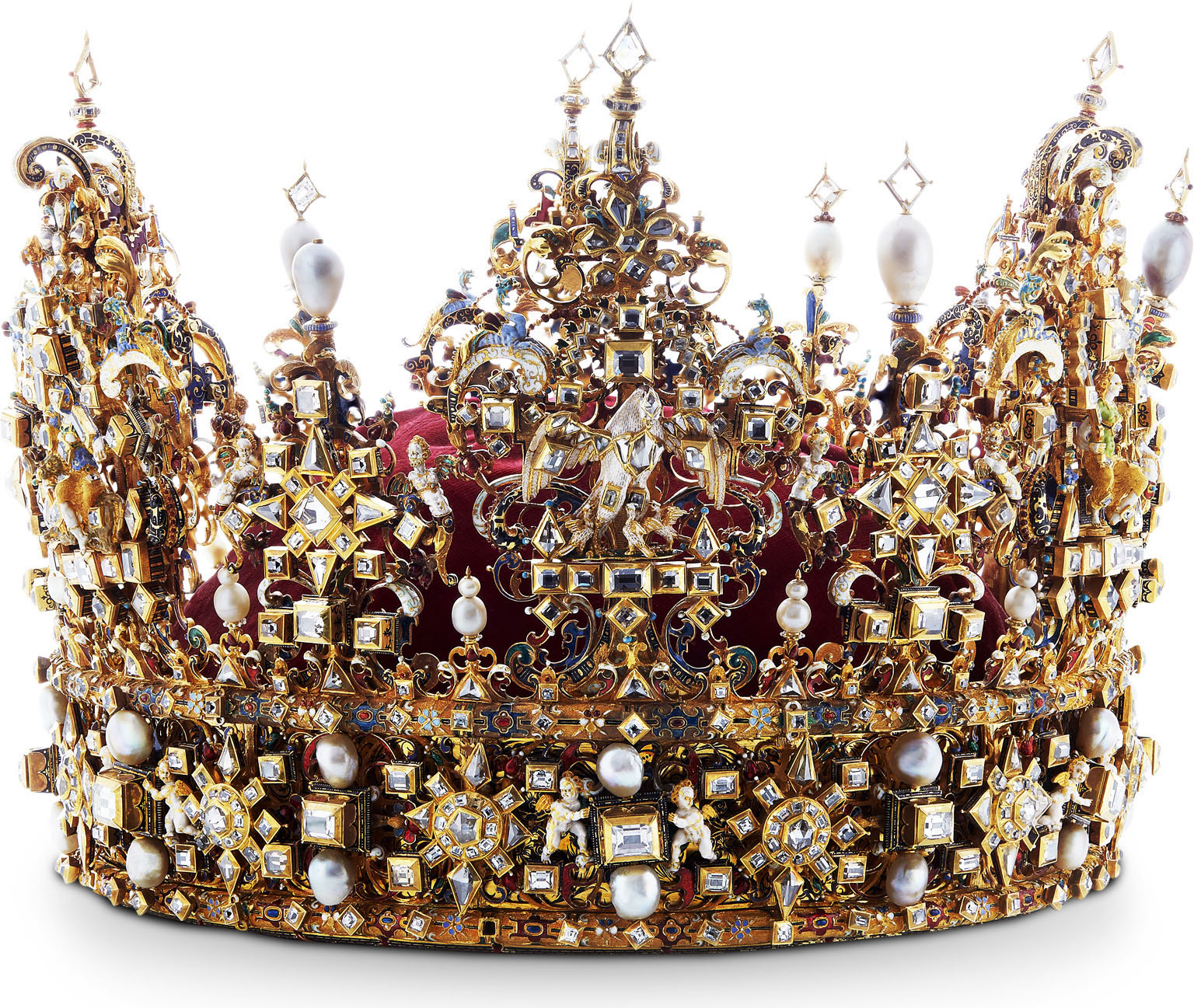
ROSENBORG SLOT AND KONGENS HAVE
Rosenborg Castle was originally built as a summer house in 1606–34 by Christian IV. At that time, it stood surrounded by sprawling gardens (now the Kongens Have park) out in the tranquil countryside. This was Christian IV’s favorite castle, and many rooms retain the original Renaissance decor from his residency. When he was on his deathbed at Frederiksborg Castle in 1648, he insisted on being brought to Rosenborg Castle, and eventually died here.
NEED TO KNOW
![]() Øster Voldgade 4A • 33 15 32 86 • www.rosenborgslot.dk
• Open Jan–mid-Apr & Nov–Dec: 10am–3pm Tue–Sun; mid-Apr–May & Sep–Oct: 10am–4pm daily;
Jun–Aug: 9am–5pm daily • Adm $17, students $11, under 18 free; Kongens Have free; Copenhagen Card accepted Guided tours (each 60–90 minutes long)
are available in English, German, and French (advance booking is required)
Øster Voldgade 4A • 33 15 32 86 • www.rosenborgslot.dk
• Open Jan–mid-Apr & Nov–Dec: 10am–3pm Tue–Sun; mid-Apr–May & Sep–Oct: 10am–4pm daily;
Jun–Aug: 9am–5pm daily • Adm $17, students $11, under 18 free; Kongens Have free; Copenhagen Card accepted Guided tours (each 60–90 minutes long)
are available in English, German, and French (advance booking is required)
- Avoid lurking near the guards at the entrance to the Crown Jewels—you might be considered a security risk.
- Grab a bite at the restaurant or the small café in Kongens Have.
1. Knight’s Hall
Known as the Long Hall before 1750, this room was completed in 1624 as a celebration hall. Only two Dutch fireplaces still remain from its original elaborate decorations.

Knight’s Hall
2. Royal Residence
Complete with fairy-tale turrets and bronze lions guarding the entrance, the castle is wholly regal. In 1838, it became the first royal residence to open to the public.

Royal Residence
3. Marble Hall
Originally serving as the bedroom of Kirsten Munk, Christian IV’s morganatic wife, this room was turned into a Baroque show of splendor to celebrate the Absolute Monarchy.
4. Crown Jewels
The castle has been used as the treasury of the realm since 1658. In the castle’s heavily guarded basement are Denmark’s Crown Jewels.

Crown Jewels
5. Dark Room
This room is filled with fascinating objects, such as wax portraits of Frederik III and a 17th-century trick chair.
6. Glass Cabinet
This room was designed as a glass cabinet in 1713–14 by Frederik IV. The cabinet was built to house the extensive collection of glassware presented to Frederik in 1709 by the city of Venice, and its contents are amazing.
7. Kongens Have
Visited by over 2 million people every year, these are Denmark’s oldest royal gardens and date back to the 17th century. There is a rose garden, which contains many statues. Various art events and a puppet theater for children are held during summer.
8. Frederik IV’s Chamber Room
In the 1700s, this room was used by Frederik IV’s sister as an antechamber and the tapestries that hang here date back to this period. Note the intricate equestrian silver statue of Frederik. The coffered ceiling is the original.

Frederik IV’s Chamber Room
9. Christian IV’s Bedroom
Another private royal apartment, this room contains Christian IV’s bloodied clothing, from the naval battle of Kolberger Heide (1644) where he lost an eye. The king wanted these clothes preserved as national mementos.
10. Winter Room
This paneled room is said to have been one of Christian IV’s most important private chambers. Look out for the speaking tubes that connect with the wine cellar and room above.

Winter Room
ROSENBORG’S KINGS
Christian IV: Built many Renaissance buildings.
Frederik III: Introduced Absolute Monarchy to control the aristocracy.
Christian V: Introduced fair taxation.
Frederik IV: Constructed Frederiksberg Palace.
Christian VI: Known as the religious king.
Frederik V: Responsible for the building of the Frederiksstaden district.
